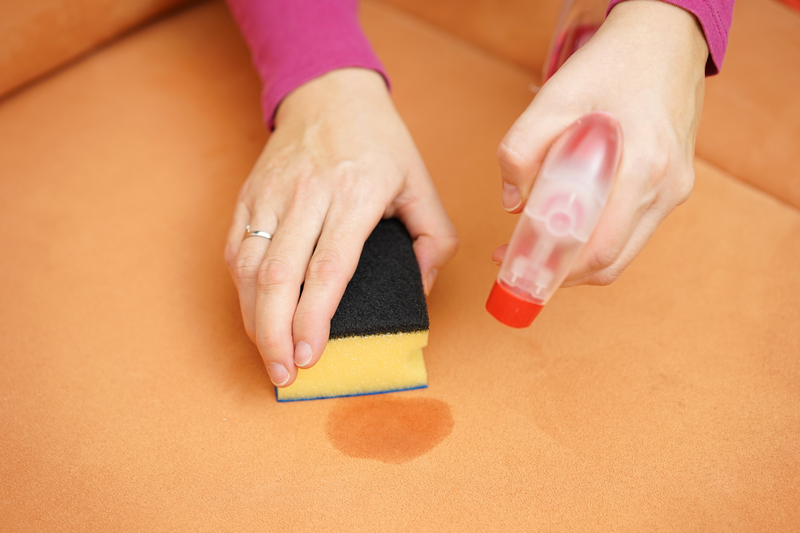Enzymatic Action in Cleaning Products
Posted on 11/09/2024
In today's market, where consumers are becoming increasingly aware of both efficacy and environmental impact, enzymatic cleaning products have carved out a significant niche. The stellar performance of these products often boils down to one vital component: enzymes. Enzymes act as biological catalysts, accelerating chemical reactions to break down complex molecules into simpler, easily removable forms. This article delves into the science behind enzymatic action in cleaning products, the various types of enzymes used, and their advantages and disadvantages.
The Science Behind Enzymes
Enzymes are proteins that speed up chemical reactions. In the context of cleaning, they work by breaking down soil, stains, and debris into smaller, more soluble forms, making it easier to wash them away. Each enzyme has a particular substance, or "substrate," that it acts upon, converting it into a different molecule.
For example, lipases break down fats (lipids), proteases break down proteins, and amylases break down starches. By targeting these specific types of molecules, enzymatic cleaners can effectively remove a wide variety of stains and soils.

Types of Enzymes in Cleaning Products
1. Proteases: These enzymes target and break down protein-based stains, such as blood, sweat, and food residues. Their action is especially useful in laundry detergents and dishwashing liquids.
2. Lipases: Lipases are incredibly effective at breaking down fat and grease. This makes them invaluable in products meant for kitchens, such as dishwashing detergents.
3. Amylases: These enzymes specialize in breaking down starch molecules, which are common in foods like pasta and rice.
4. Cellulases: While not as commonly discussed, cellulases break down cellulose, helping to remove soil and dirt from cotton fabrics.
Benefits of Enzymatic Cleaning Products
1. Eco-Friendly: Enzymatic cleaners are biodegradable and less harmful to the environment compared to conventional chemical cleaners.
2. Efficient: They work at moderate temperatures, which reduces energy costs associated with heating water.
3. Versatile: Effective on a variety of stains and surfaces, making them suitable for multiple cleaning applications.
4. Gentle: Safe on fabrics and skin, making them ideal for people with sensitive reactions to harsh chemicals.
Downsides of Enzymatic Cleaners
1. Specificity: Different enzymes work on different types of stains, meaning a single product may not be a universal solution.
2. Temperature Sensitivity: While they are effective, enzymes work optimally within certain temperature ranges, typically between 30-40?C (86-104?F).
3. Cost: These products can be more expensive due to the complexity of producing specific enzymes and incorporating them into formulations.
Tips for Maximizing the Efficacy of Enzymatic Cleaners
1. Always read the label to understand the type of enzyme and its target stain or soil.
2. Pre-treat stains with enzymatic cleaners before washing for better results.
3. Ensure the water temperature is within the optimal range for the enzyme to work effectively.
4. Store the products according to the manufacturers' guidelines to maintain enzyme activity.

Takeaways
Enzymatic cleaning products provide a highly efficient, eco-friendly alternative to traditional chemical cleaners. Understanding the type of stains you're dealing with and selecting the appropriate enzymatic cleaner can result in superior cleaning performance. However, these products do come with certain limitations like cost and the need for specific temperature conditions for optimal performance.
Conclusion
In conclusion, the enzymatic action in cleaning products offers a plethora of benefits, ranging from environmental sustainability to superior cleaning efficacy. While they may not be the ultimate solution for every type of stain, when used correctly, they can outperform many traditional cleaning products. By incorporating the right type of enzymatic cleaner into your routine and following best practices, you can achieve a cleaner, greener, and more efficient cleaning regimen.
Pros:
- Environmentally friendly and biodegradable
- Versatile and effective against various stains
- Work well at moderate temperatures, reducing energy use
- Gentle on fabrics and skin
Cons:
- Not universally effective on all stains
- Temperature-sensitive
- Generally more expensive
Understanding both the advantages and limitations allows consumers to make informed choices, ensuring optimal performance while aligning with eco-friendly practices.







